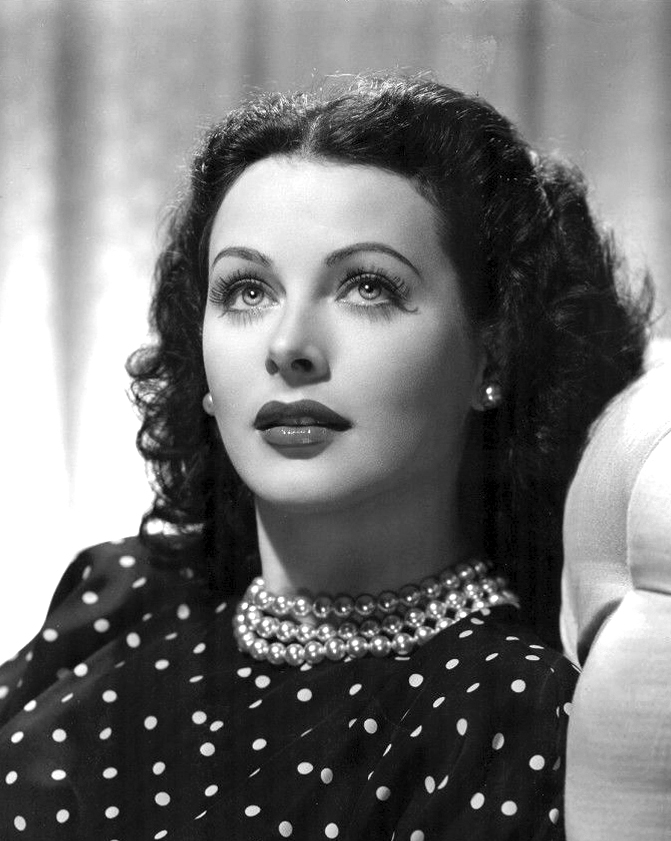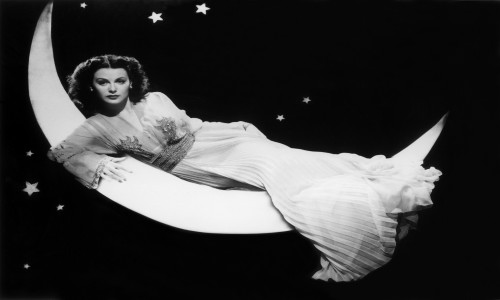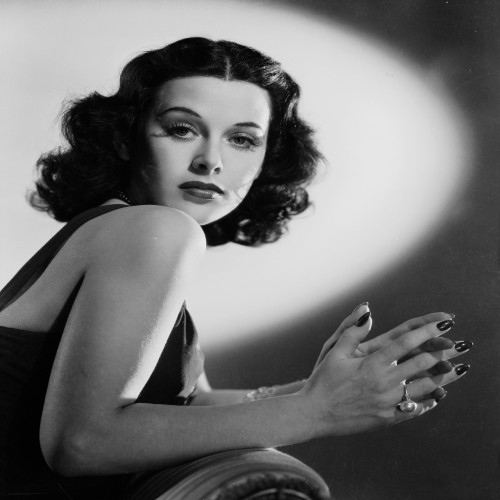Hedy Lamarr: Beauty and Brains
March 14, 2022

By: Kaysey A. Richardson
“Any girl can be glamorous. All you have to do is stand still and look stupid.”
I am a huge advocate for historical fiction being used as a way to learn about the past. Oftentimes I will pick up a historical fiction book with little to no knowledge of the topic and after reading it, I find myself continuing to research that part of history. This is what happened after reading Marie Benedict’s The Only Woman in the Room. The Only Woman in the Room centers around the secret life of famous actress, Hedy Lamarr who was known for her undeniable beauty on the screen. What many do not know is that in addition to her beauty and fame, Hedy was an inventor and scientist who forged technology that contributed to today’s WiFi, GPS, and Bluetooth communication systems.
Born in Vienna, Austria on November 9, 1914 as Hedwig Eva Kiesler, Hedy had an early interest in learning how things worked and operated. At the age of only five, Hedy tinkered with her music box, taking it apart and reassembling it to understand how it worked. Her father often took her for long walks and discussed with her how things such as the printing press or street cars functioned. Although Hedy exhibited intelligence at a young age, it was overshadowed by her beauty. She was only sixteen when she was discovered by director Max Reinhardt. With Reinhardt, Hedy began to study acting in Berlin and landed her first small role in a German film called Money on the Street by 1930.

It was not long before her beauty and talent on the stage caught the eye of Fritz Mandl, an Austrian munitions dealer. Mandl became infatuated with Hedy upon seeing her performance in the play Sissy, and in 1933 the two would wed. The marriage would ultimately be short-lived due to Mandl’s controlling ways. Hedy described her marriage to Mandl as feeling as though she was imprisoned: “I knew very soon that I could never be an actress while I was his wife…I was like some object of art which had to be guarded...having no mind of its own.”
Although Hedy was quite unhappy in her four-year marriage with Mandl, she continued to play the role of his wife and hostess and sat in rooms with Mandl’s troublesome business partners, just listening to what they discussed. Many businessmen that Mandl hosted for dinner were associated with the Nazi party, and at one point, Mussolini himself attended a dinner meeting that Hedy attended. After finally escaping the clutches of Mandl in 1937, Hedy kept the knowledge she gathered about wartime weaponry while hearing conversations with these various men.
After her marriage, Hedy arrived in London where she met Louis B. Mayer from MGM Studios who invited her back to Hollywood to become an actress in America. Throughout her time in Hollywood, Hedy acquainted herself with Howard Hughes, a businessman and pilot who helped fuel her scientific mind by providing her with a set of equipment that she could use in her trailer on set. Additionally, Hedy had an inventor’s table at home, so whether she was between takes or off the set, Hedy always was tinkering. Hughes took Hedy to his airplane factories and showed her how the planes were built.He also took this opportunity to introduce her to many scientists that were behind the process.

Hedy knew that she was gifted, stating one time that “improving things comes naturally to me.” She created an upgraded stoplight, an edible tablet that dissolved in water to make a soda that tasted similar to Coca-Cola, and most significantly hopping frequencies which was engineered just as the United States was about to enter World War II. George Antheil partnered with her in creating this invention. In 1940, Hedy met Antheil at a dinner party where they played a song on the piano together. Antheil was most known for his writing, film scores, and experimental music composition and additionally shared the same imaginative mindset as Hedy.
Together the two came up with a new communication system that initially aimed to help guide torpedoes to their targets in war. The system combined the use of “frequency hopping” with radio waves, and would prevent the interception of those specific waves, thus allowing the torpedo to find its projected target. Hedy and Antheil sought a patent and military support for the invention soon after its creation in 1942, but the Navy ultimately ended up shelving the integration of their new system. Following the rejection, Hedy continued her efforts to support the war by selling war bonds and using her celebrity status to raise awareness.
Hedy’s patent expired before she could make any real money off but continued to work as a well-known actress throughout the fifties. It would not be until 1997 that her inventive mind would be recognized and rewarded, when the Electronic Frontier Foundation awarded Hedy and Antheil with their Pioneer Award. Shortly after, Hedy became the first woman to receive the Invention Convention’s Bulbie Gnass Spirit of Achievement Award and was additionally inducted into the National Inventors Hall of Fame for the development of her frequency hopping technology in 2014—fourteen years after her death.
Although it is now clear that her invention of hopping frequencies led to the creation of WiFi and other wireless communications such as GPS and Bluetooth, Hedy saw little recognition while she was alive for her creation and scientific mind. Throughout her life, Hedy was known for her beauty and performances on screen, this overshadowing her ingenious mind.
References: https://www.womenshistory.org/education-resources/biographies/hedy-lamarr
Further Reading for Women’s History Month:
The true beauty of Women’s History Month is uncovering stories such as Hedy Lamarr’s and this can be done through the usage of historical fiction books. Here’s a quick list of other historical fiction books that tell powerful stories of women from our past:
The Only Woman in the Room by Marie Benedict
The Alice Network by Kate Quinn
The Lost Apothecary by Sarah Penner
The Four Winds by Kristin Hannah